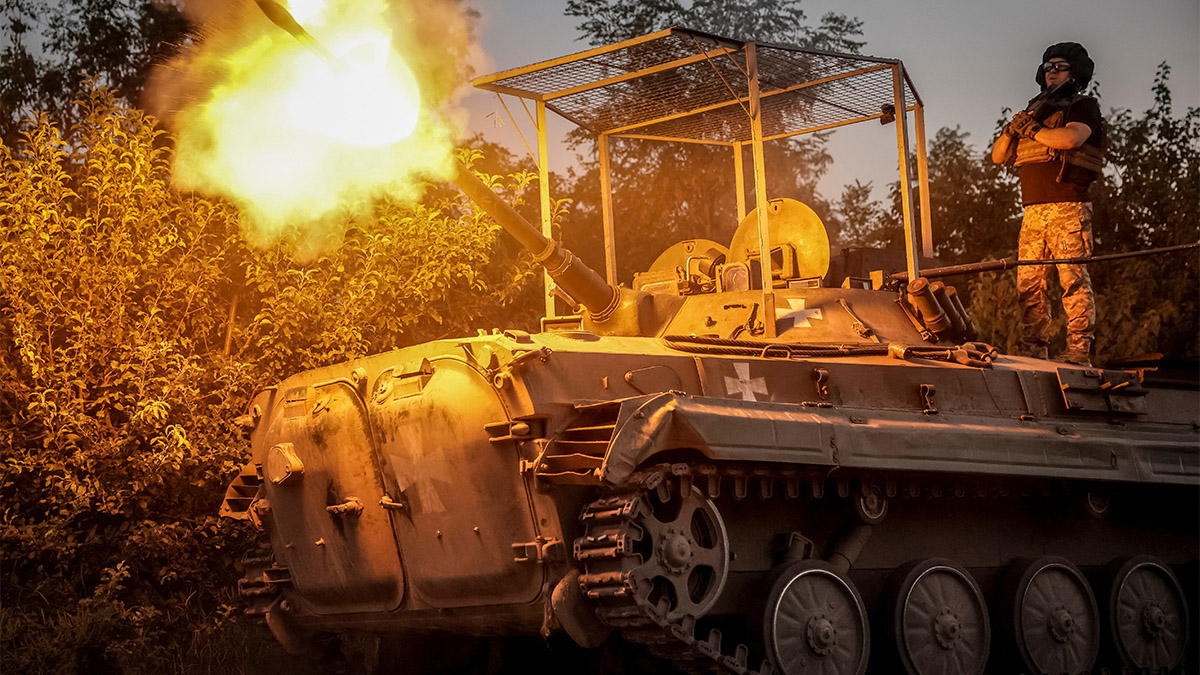Throughout the history of warfare the role of infantry has remained crucial adapting to technological advancements and shifting battle strategies. From ancient skirmishes to modern conflicts like the ongoing Russia-Ukraine war, infantry—whether traditional or mechanised—continues to determine territorial control and battlefield outcomes. With more “boots on the ground,” a dominant force can secure crucial regions, turning the tide of battle.
In the thousand-day conflict between Russia and Ukraine so far, infantry operations have taken centre stage, highlighting their indispensable nature. From hand-to-hand combat in urban zones like Donetsk to larger mechanised assaults in Kursk, both sides are vying for supremacy. Even foreign involvement highlights this importance: North Korea has reportedly deployed 10,000 troops to aid Russia including units stationed near the Ukrainian border in the Kursk region, as confirmed by the Pentagon.
Evolving role of infantry in the Russia-Ukraine War
The ongoing war has showcased the transformative role of infantry and mechanised units in modern conflicts. Both Ukrainian and Russian forces have employed these units extensively, adapting to the unique challenges posed by terrain, technological limitations and logistical constraints.
Ukraine’s mechanised infantry
Ukraine’s mechanised infantry has played a key role in its defensive and offensive strategies. Brigades like the 47th Mechanised Infantry have leveraged Western-supplied equipment such as Bradley infantry fighting vehicles and Abrams tanks to conduct counteroffensives. These tools have significantly improved troop mobility and survivability enabling Ukrainian forces to breach fortified Russian lines in regions like Zaporizhzhia and Kursk.
The Bradley fighting vehicles, in particular, have proven invaluable. Their robust armour and advanced weaponry allow Ukrainian soldiers to engage in prolonged combat while minimising casualties. Additionally, Ukraine’s integration of precision-guided munitions and real-time intelligence has made up for its numerical and firepower disadvantages, showcasing the effectiveness of combined-arms operations.
Impact Shorts
More ShortsHowever, challenges persist. Ukraine’s offensives often incur high attrition rates due to Russia’s overwhelming artillery and aerial bombardments. Urban warfare and muddy terrains have further constrained the mobility and effectiveness of mechanised units, especially in contested zones like Donbas. Yet, Ukrainian forces continue to adapt, leveraging NATO training and advanced tactics to exploit Russian weaknesses such as logistical inefficiencies.
Russia’s infantry: Strength and strategy
Russia’s infantry operations began with large-scale offensives aimed at rapid territorial gains. However, poor coordination, logistical bottlenecks and stiff Ukrainian resistance derailed these plans. Mechanised units reliant on massed tank assaults suffered devastating losses against modern anti-tank systems like Javelins and NLAWs, supplied to Ukraine by Western allies.
In response, Russia shifted its strategy to attritional warfare, relying heavily on artillery bombardments to weaken Ukrainian defences. While this approach has achieved localised successes, it has struggled to secure decisive territorial control in entrenched areas.
Russia’s mechanised infantry has demonstrated resilience in leveraging numerical superiority and heavy equipment. However, systemic issues like outdated Soviet doctrines, corruption and insufficient training undermine their long-term effectiveness. High attrition rates for both personnel and armoured vehicles have further eroded Russia’s battlefield advantage.
Contrasting strategies
A stark contrast between the two sides lies in their approach to training, equipment and innovation. Ukraine’s reliance on NATO-standard training and Western weaponry has resulted in superior tactical proficiency. The use of drones and guided munitions integrated with infantry and armour operations has given Ukrainian forces a strategic edge. In contrast, Russia’s reliance on Soviet-era doctrines limits adaptability. While the deployment of advanced weapons like thermobaric munitions has enhanced firepower, inconsistent implementation and logistical inefficiencies hamper their effectiveness.
However, geographical constraints, such as the muddy terrain of eastern Ukraine and urban environments in cities like Bakhmut, further shaped the conflict. While these challenges hinder mobility for both sides, Ukraine’s reliance on Western supply chains has ensured a consistent flow of resources unlike Russia’s fragmented logistical efforts.
Lessons from history: The legacy of infantry
The Russia-Ukraine war is only the latest chapter in the storied history of infantry. From the phalanxes of ancient Greece to the legions of Rome, infantry has always been at the heart of military strategy. Medieval conflicts saw specialised units like Swiss pikemen and English longbowmen outmanoeuvre knights, while the advent of gunpowder transformed infantry tactics with muskets and pikes.
World War I marked a turning point, with traditional infantry roles giving way to mechanised operations supported by tanks and artillery. By World War II, combined-arms strategies involving mechanised infantry, tanks, and air support became the norm. Cold War innovations, such as the Soviet BMP-1 and the American Bradley, further emphasised the importance of protected mobility and firepower.
Today, infantry continues to evolve, incorporating high-tech tools like drones, guided missiles and advanced communication systems. Mechanised units, such as the Russian T-15 Armata and the American Stryker, exemplify the modern emphasis on speed, protection, and adaptability.
Future of infantry in modern warfare
As the Russia-Ukraine conflict persists, the role of infantry and mechanised units remains significant. Ukraine will likely continue refining its combined-arms tactics and integrating advanced weaponry, while Russia may rely on numerical superiority and attritional strategies.
However, both sides face significant challenges. Ukraine must contend with wear and tear on its Western-supplied equipment and the logistical complexities of maintaining supply lines. Russia, on the other hand, must overcome systemic inefficiencies and sustain troop morale. Ultimately here is the timeless truth: despite technological advancements, the core role of infantry—holding ground and winning battles—remains unchanged. From ancient battlefields to today’s mechanised engagements, infantry continues to adapt, proving its indispensability in the ever-changing theatre of war.


)

)
)
)
)
)
)
)
)



